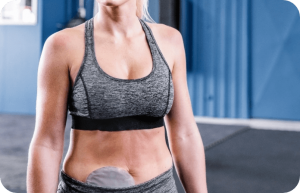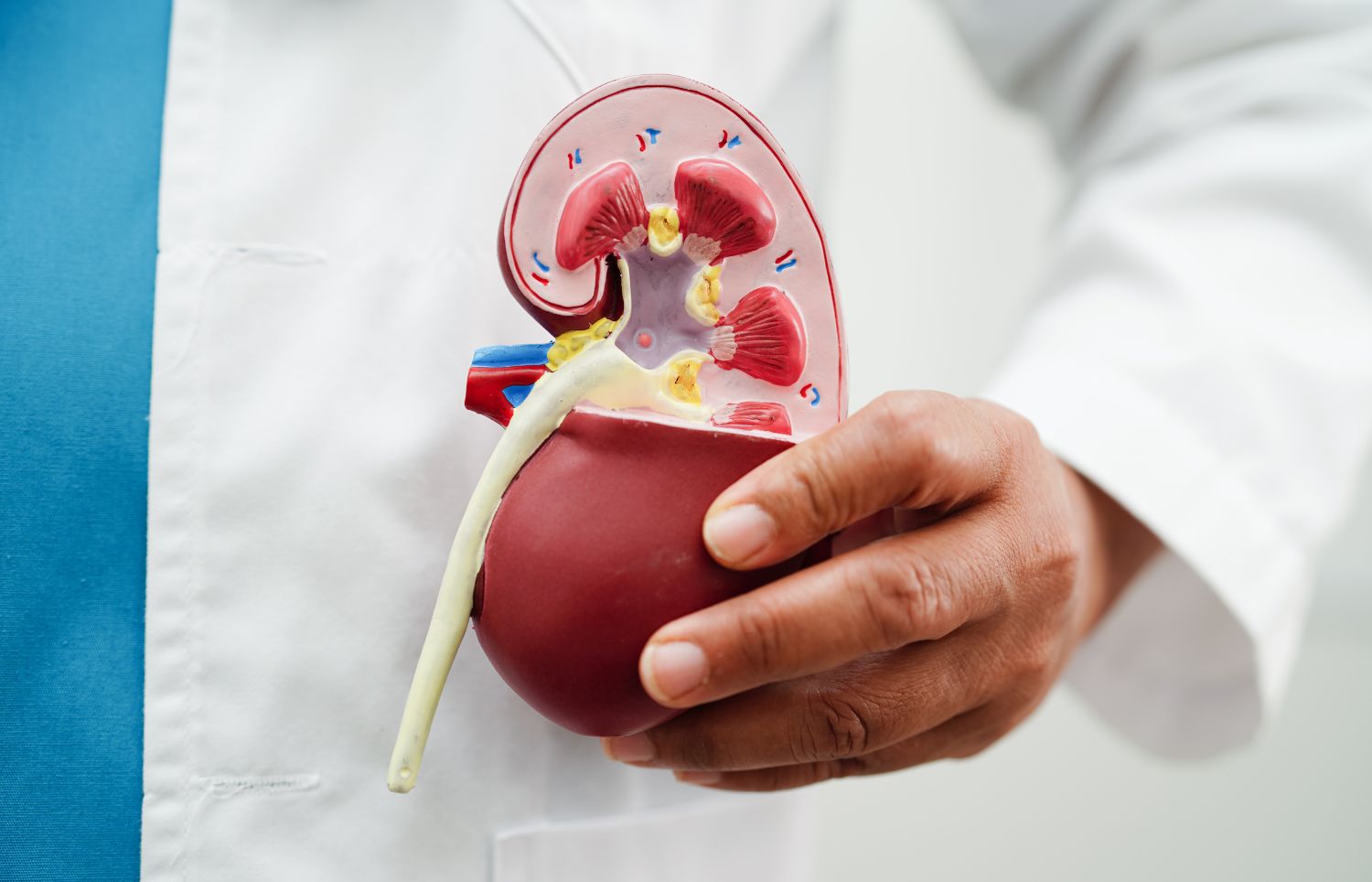A stroke occurs when the blood supply to the brain is cut off, this can be caused by either a blockage in the brain or a bleed in or around the brain. Many strokes happen because the arteries become hardened over time, your lifestyle, certain medical conditions and age can cause your arteries to harden and narrow.
Symptoms Of CVA/ Stroke
Strokes happen very suddenly but there are some key symptoms that you can look out for. If symptoms can be recognised and treated quickly, then the patient is more likely to survive or make a recovery.
The FAST Test
- Facial weakness – can the person smile, have any of the facial muscles dropped on the one side?
- Arm weakness – can the person raise both arms and keep them there?
- Speech problems – can the person speak clearly and understand what you are saying? Is their speech slurred?
- Time to call 999
Why Might A Person Who’s Suffered A Stroke Become Incontinent?
Around half of stroke patients will suffer from some form of incontinence, for many this is temporary whilst the brain injury heals. Stroke patients can suffer from both bladder and bowel incontinence. Below are some of the reasons why incontinence happens
- Reflex incontinence – The person may not be fully conscious or aware of their surroundings and may wet or soil themselves without realising
- A stroke may have damaged part of the brain that controls the bladder or bowel or may have affected a person’s dexterity making it difficult for them to remove clothing in time
- Being less mobile or certain types of medication may cause constipation, which can lead to overflow incontinence if the bowel becomes impacted
- Difficulty communicating – they may not be able to tell someone that they need the toilet
- Urinary incontinence such as frequency, urgency and stress incontinence – certain medications used to treat stroke can affect this so it’s always worth asking your health professional if medication can be adjusted
- Nocturnal enuresis – where the person may wet the bed during the night
CVA/ Stroke And Incontinence Treatments
There is plenty that can be done to help improve incontinence in stroke patients. Only around 15% of stroke patients will still have continence issues a year on from their stroke. Some of the below methods are used to help treat incontinence.
CONSERVATIVE TREATMENTS
Diet And Lifestyle
A patient’s diet can be adjusted in order to keep the bladder and bowel as healthy as possible. It is important that the person concerned eats a healthy, balanced diet with plenty of fibre and consumes enough fluid (ideally water and around 6-8 glasses a day) in order to regulate the bowel and keep stools at the right consistency and avoid constipation. It is best to limit or avoid caffeine, fizzy drinks and alcohol as these can irritate the bladder. If the person is suffering from urinary incontinence, it may appear to be counter-intuitive to drink more fluids but over time the bladder will adapt to the correct volume and less concentrated urine will cause less bladder irritation and cut the risk of bladder infections.
Bladder And/ Or Bowel Retraining
Bowel retraining and bladder retraining involves establishing your bladder or bowel into a regular routine and retraining your brain to hold on. You start by going to the bathroom when you get the urge to go and hold for 1 minute before sitting down. Gradually increase the length of time until the person feels more confident with their control. It is also helpful to regulate the times that they visit the toilet. Make sure that this is at a time that is comfortable and allows enough time so that they don’t feel anxious. Some people also like to record a bladder/bowel diary to see if any foods or drinks affect their function.
Establish Routines
Creating a routine can help to avoid accidents. It can help to take the person to the toilet after every meal or every couple of hours and make sure they are eating and drinking at regular times. Limit drinks two hours before bedtime to avoid accidents overnight, it is important to make sure that they have had enough to drink during the day though.
Appropriate Clothing
Clothing that can be easily removed, elasticated waists without zips and buttons can help those who struggle with their dexterity and can be quickly removed by those who suffer from urge incontinence.
Pelvic Floor Muscle Exercises
The pelvic floor is layers of muscles that stretch from the pubic bone to the coccyx and then from side to side. These muscles help to support the bladder and bowel plus the womb in women. These muscles can become weak through trauma such as childbirth or surgery, changing hormones, persistent coughing, chronic constipation or even damage caused to the brain such as from a stroke. When these muscles become slack it can weaken the sphincter muscle to the rectum or bladder allowing the involuntary passing of stool or urine. Click to read more about pelvic floor muscle exercises.
Biofeedback
Biofeedback is a type of bowel training exercise. It involves placing a small electric probe into the rectum and a sensor will measure movement and pressure from the sphincter muscles. The patient will be asked to squeeze their sphincter muscles and the probe will measure the response. This information will be able to guide whether they are able to learn to squeeze effectively to retain bowel control.
Physiotherapy And Occupational Therapy
Physiotherapists can help with exercise routines designed to improve strength, mobility and coordination following a stroke. They can help to teach pelvic floor muscles exercises to gain continence and help the person to learn the best way for to transfer from the bed to the toilet or a commode.
Occupational therapists can help assess a person’s home situation and see whether they would benefit from any medical aids that can help make life easier such as handrails in the bathroom for balance, walking aids, commodes or wheelchairs.
Continence Products
There are many products available that can help the person to feel more comfortable and will protect clothing and furniture. These are useful items to have in the early stages following a stroke and help keep them dry and look after their skin.
- Incontinence pads and pants – these are available in a variety of sizes and absorbencies and can help to draw fluid away from the skin
- Male continence sheath – these can be worn over the penis and attached to a leg bag. These are particularly useful at night
- Bed pads and mattress protectors – these can help to keep the bed clean and dry. There are also covers and pads available for chairs
Catheters
If the person is suffering from total urinary incontinence and has pain and skin soreness associated with urine contact than their healthcare practitioner may recommend an indwelling catheter as a short term or longer term solution or a suprapubic catheter if you require a more permanent solution or if an indwelling catheter is unsuitable.
Visit the Bladder & Bowel Home Delivery Service for more information and to order these products. Our caring, specially trained advisors can help you decide which option is most suitable for you.
MEDICINAL
Laxatives
As stroke patients tend to be less mobile, this can lead to constipation, which then can in turn lead to overflow incontinence. To relieve constipation quickly, there are some over-the-counter laxatives that can be purchased. These can be used in order to avoid impaction of the bowel and any overflow incontinence as a result. There are a variety of laxatives available that act in different ways. Bulking laxatives such as Fybogel, which work in the same way as increasing fibre in their diet; osmotic laxatives, which work by softening the stool making it easier to pass, and stimulant laxatives such as senna, which encourages peristalsis and stimulates the gut to pass the stool. Make sure that you speak to your local pharmacist or GP about which type of laxative is best to use.
Antispasmodic Medications
There are several medications available which can help prevent spasms of the bladder muscle, which can help reduce urgency and frequency incontinence associated with a stroke; they belong to a group of medicines known as antimuscarinic or anticholinergic drugs. Below is a list of some medications that may be prescribed and links to more information. These medications are not suitable for some people so it’s important to check that it is safe for a patient to take these.
Darifenacin Hydrobromide
Fesoterodine Fumarate
Oxybutynin
Oxybutynin Transdermal Patch
Solifenacin Succinate
Tolterodine
Trospium Chloride
Antimotility Medication
Antimotility/ antidiarrheals such as loperamide, more commonly known as Imodium can be purchased over-the-counter. They work by slowing the gut transit making your stools firmer and pass less frequently. It is important not to use this medication if the person has diarrhoea with blood and/or mucus or has a temperature. Some people find that this type of medication increases pain and bloating in the stomach.
Injectable Treatments
Injectable therapies are available as a treatment, which bulk up the anal sphincter muscles or urethra to improve leakage. This involves injecting a gel into the necessary area to thicken the tissues and prevent soiling and improve control.
Further information and downloads can be found in the help & information section. Living with a bladder or bowel condition or caring for someone with a bladder and bowel condition can affect you emotionally and socially; sometimes it can help to speak to others who understand your situation. The Bladder & Bowel Community Support Group is available 24 hours today and will allow you to connect with those who share your condition. Start your own topic today or just follow one that interests you.








